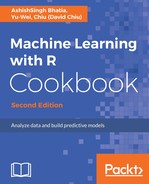The aim of machine learning is to uncover hidden patterns and unknown correlations, and to find useful information from data. In addition to this, through incorporation with data analysis, machine learning can be used to perform predictive analysis. With machine learning, the analysis of business operations and processes is not limited to human scale thinking; machine scale analysis enables businesses to capture hidden values in big data.
Machine learning has similarities to the human reasoning process. Unlike traditional analysis, the generated model cannot evolve as data is accumulated. Machine learning can learn from the data that is processed and analyzed. In other words, the more data that is processed, the more it can learn.
R, as a dialect of GNU-S, is a powerful statistical language that can be used to manipulate and analyze data. Additionally, R provides many machine learning packages and visualization functions, which enable users to analyze data on the fly. Most importantly, R is open source and free.
Using R greatly simplifies machine learning. All you need to know is how each algorithm can solve your problem and then you can simply use a written package to quickly generate prediction models on data with a few command lines. For example, you can perform Naïve Bayes for spam mail filtering, conduct k-means clustering for customer segmentation, use linear regression to forecast house prices, or implement a hidden Markov model to predict the stock market, as shown in the following screenshot:

Moreover, you can perform nonlinear dimension reduction to calculate the dissimilarity of image data and visualize the clustered graph, as shown in the following screenshot. All you need to do is follow the recipes provided in this book:

This chapter serves as an overall introduction to machine learning and R; the first few recipes introduce how to set up the R environment and the integrated development environment, RStudio. After setting up the environment, the following recipe introduces package installation and loading. In order to understand how data analysis is practiced using R, the next four recipes cover data read/write, data manipulation, basic statistics, and data visualization using R. The last recipe in the chapter lists useful data sources and resources.
